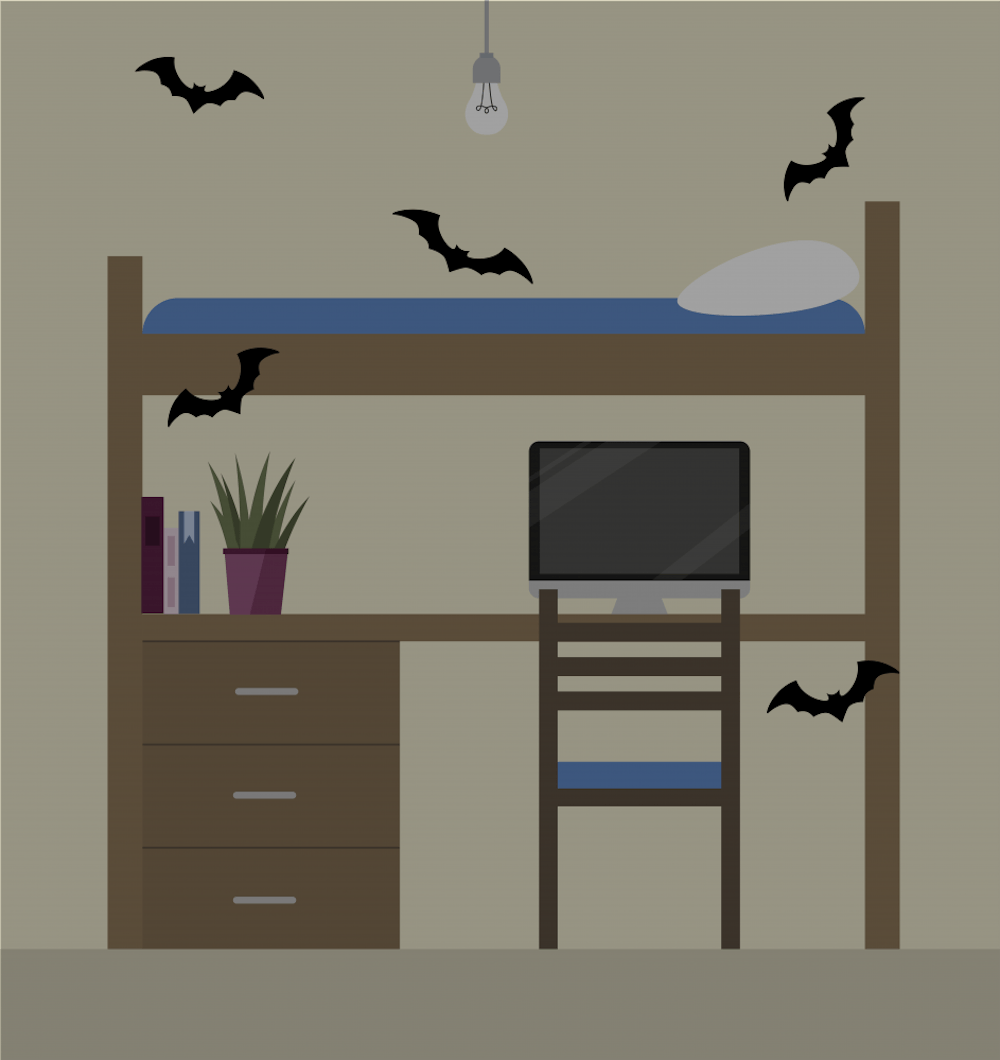Students might want to think twice about leaving their windows open in the spring.
Ohio University’s Health and Safety Team removed 36 bats from residence halls in 2017, Environmental Health Coordinator Chad Keller said.
There are several ways bats can end up inside residence halls. The most common means of entry is through open windows without screens.
Bats can pass through any gap three-eighths of an inch or greater, which can allow bats to get inside through wall voids and attic spaces, Keller said.
When found indoors on campus, bats are physically removed by trained staff using nets, gloves and cans or cages. They are then released back into the wild at an off-campus location.
If students find a bat anywhere in their residence halls, they should, first and foremost, leave it alone. Students should never attempt to catch or interact with bats.
“Anyone who encounters a bat should know to never touch a bat,” Joseph Johnson, an assistant professor of biological sciences, said.
Students should alert their resident assistants about any bats. Environmental Health and Safety’s response time to a bat report is typically 10 to 30 minutes depending on the time of day the animal is found.
Johnson said students should never approach and handle bats, but at the same time, they do not need to be afraid of bats.
“Give the animal respect and space,” Johnson said. “Leave it on its own by opening a window. If that doesn’t happen, call somebody who will safely take it away. Don’t be afraid, but don't be silly.”
Johnson said the risk of getting sick from a bat is “severely exaggerated.”
“A lot of people think because a bat is there, they’re going to get rabies, or it’s going to fly in their hair,” Johnson said. “That’s an incredibly rare occurrence.”
Johnson said that, although disease is rare and bats do not necessarily need to be feared, rabies is a fatal disease, and students should therefore be cautious with bats.
It is illegal to kill a bat in the state of Ohio because they are endangered, he added.
“Bats are harmless,” Marnie Behan, a sophomore studying wildlife and conservation biology, said. “They won’t do anything to you unless you try to grab them.”
Hannah Barton, a sophomore studying retail merchandising and fashion, is one of the students who had a bat removed from her dorm room.
She said she heard a high-pitched noise coming from her heat vent for a few weeks.
“I would only hear it when it was quiet and no one else was around,” Barton said. “I basically thought I was going insane.”
Eventually, Barton was in her residence hall's common area when she heard her roommate scream. She went back to her room and found a bat on her Christmas lights, which prompted her to call her resident assistant. She never heard the noise after that.
Since October 2014, Housing and Residence Life, with the help of Environmental Health and Safety, has worked three times with Commercial Bat Control of San Antonio, Texas, to perform bat exclusion work.
Since then, OU’s calls for bat removal have dropped by 66 percent, Keller said.
A fourth round of exclusion work is scheduled for May 2018.






